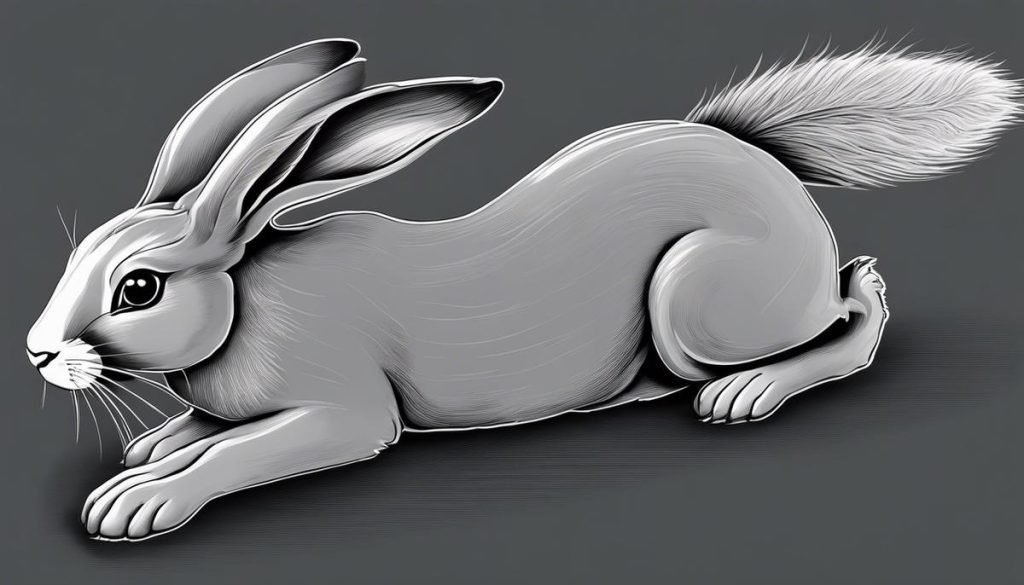A rabbit, recognized by its iconic fluffy tail, is an endearing creature that often graces our homes as a beloved pet. While these animals are known for their agile nature, they are not invincible to harm. One part of their anatomy that’s frequently overlooked when considering potential injuries is their tail. This essay dives into the detailed anatomy of a rabbit’s tail, exploring its unique structure — comprised of a few vertebrae enveloped in ample flesh and fur. Understanding this anatomy allows us to examine whether a rabbit’s tail is susceptible to actual breakage or not. This will be followed by a comprehensive discussion on the common causes and symptoms of bunny’s tail injuries, the tips and tricks for prevention, and the most beneficial response in case of such occurrences.
Understanding Rabbit Anatomy
Rabbit tails, or scuts, as they are scientifically referred to, are quite intriguing and unique structures. Characterized by their small, round, and fluffy appearance, rabbit tails serve as a vital tool for communication and survival. Composed mainly of a combination of long, fluffy fur and a small amount of underlying bone and muscle, a rabbit’s tail is more than just a cute accessory. Its bright white color and distinct shape make it an effective signaling device. A swift upward flip reveals the scut’s white underside, serving as a stark visual alarm to other rabbits in the vicinity when danger lurks.
Despite the furry, squishy appearance, there is indeed a skeletal structure within the tail. This is referred to as the coccygeal vertebrae, similar to the coccyx or “tailbone” in humans. Although it’s relatively small, it’s sturdy enough to support the fluff of fur that we often associated with a rabbit’s tail. However, just like any other bone in a rabbit’s body, it is also prone to injuries and can indeed be broken. Proper caution should be taken when handling a rabbit to avoid accidents. In instances where a rabbit’s tail gets broken, it is imperative to seek immediate veterinary attention to prevent severe discomfort and potential complications down the line. Remember, rabbits are skilled at hiding pain, so regular checkups and careful observation are crucial to ensure their well-being.

Common Causes & Symptoms of a Bunny’s Broken Tail
Rabbit tails, while not typically the first thing that comes to mind when dealing with rabbit health, can sometimes be prone to breaks. This can be due to mishandling, such as rough catching by the tail, or even unfortunate accidents like entrapment in tight spaces. Larger, more active breeds are especially susceptible to breaks due to their increased mobility and capacity for mischief. Remember- prevention is key here! Familiarize yourself with your bunny’s habitat and remove any potential sources of tail injury.
Noticeable symptoms of a broken tail can vary, as rabbits are notorious for hiding discomfort. However, a keen eye might spot some telltale signs. One major indication of a broken tail is a change in how the tail is carried. A healthy tail is usually held upright, whereas a broken tail might sag or lay flat against the body. Another typical sign is the absence of the usual tail-wag during enthusiastic hopping. Furthermore, the rabbit may show signs of discomfort when its tail is touched or moved, or even shy away from touching altogether if it associates it with pain. Lastly, alteration in normal behavior such as decreased activity or appetite might indicate a broken tail. If you see any of these signs, play it safe and consult your vet.

How to Respond to and Prevent Tail Injuries
Once an injury or break has occurred, proper handling of the situation becomes critical. Some might think “it’s just the tail, what can happen?” but remember, that tail is part of the rabbits spine and any damage there needs serious consideration. A vet may recommend a series of treatments depending on the severity of the injury.
Pain management with safe medications for rabbits will likely be the immediate focus, followed by immobilization or setting the tail if needed. In accentuated cases, surgical correction or even amputation might be the last resort. Follow the vet’s advice exactly, including administering prescribed medicine and keeping your rabbit comfortable during the healing period.’s advice exactly, including administering prescribed medicine and keeping your rabbit comfortable during the healing period.
On the prevention front, fostering a safe environment for your rabbit is a primary deterrent for tail injuries. Avoid unnecessary tail handling or poking, and discourage small children from pulling or tugging. A rabbit-friendly habitat gives them room to hop freely and explore without sharp corners, squeeze-spaces, or unstable surfaces that are prone to causing twists or falls. Additionally, regular interactive and observational sessions can help you spot any abnormal behavior patterns early; loss of balance, reduced hopping, or signs of pain while moving can be early warnings. Imbibe the rule of thumb: when it comes to bunny tails, its a ‘look but don’t touch’, and ‘safe but don’t confine’ mantra.

Being well-informed is the best defense for keeping a pet rabbit safe and healthy. Though the tail injury in rabbits may be less common due to their anatomical structure, it’s crucial to be aware of the potential hazards and signs of injury. Understanding the essential anatomical structure of a rabbit’s tail provides the knowledge required to protect these little creatures from risk. Meanwhile, being cognizant of the common causes and symptoms of tail injuries can equip rabbit owners to react promptly and appropriately. Protecting your furry friend is a responsibility that extends to all facets of their wellbeing, and with the right knowledge and practices, such as safe handling and providing an appropriate living environment, accidents like tail injuries can be effectively prevented.



